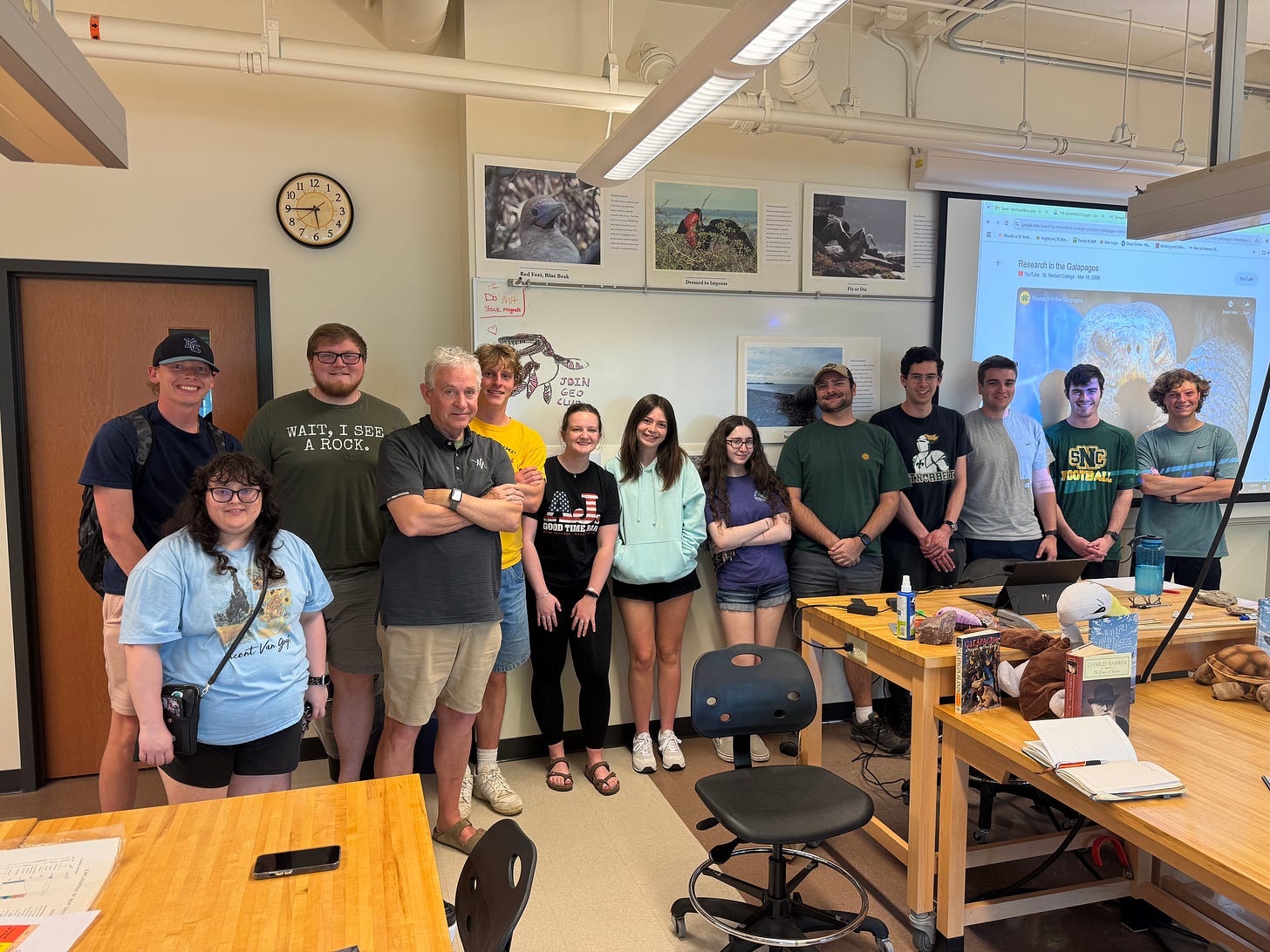Waverly visits SNC Geology Class
Returning to my alma mater for a Galapagos book talk with Dr. Tim Flood
Fifteen years ago I graduated from St. Norbert College as an English major and art minor. I returned to campus earlier this week on the afternoon of Tuesday, May 13th, making the familiar drive on Hwys. 26 and 41 to De Pere.
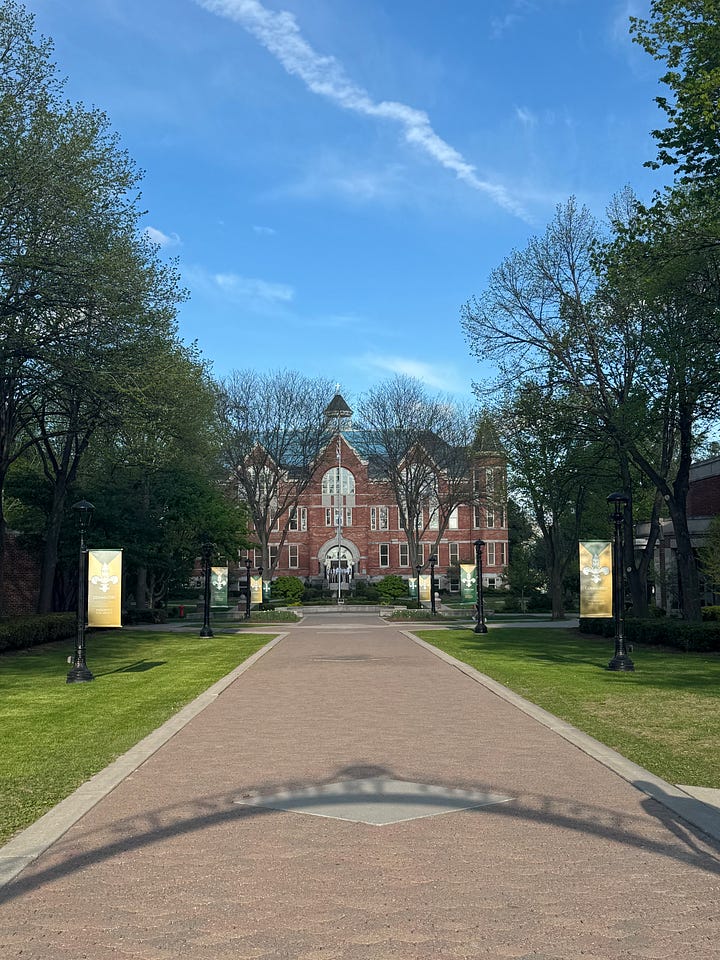
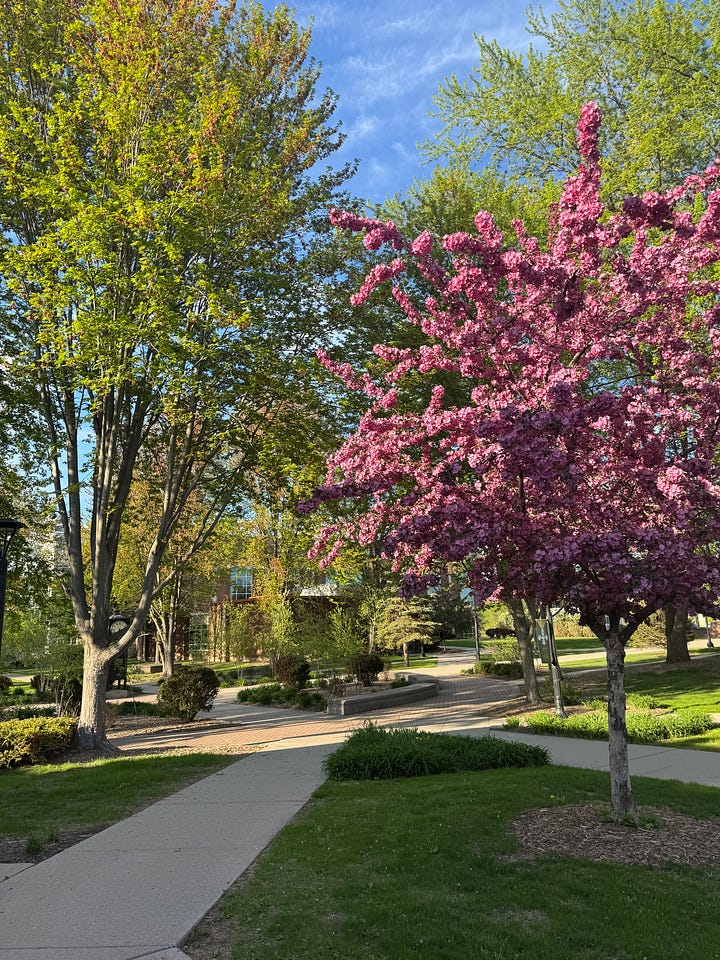
For one hour that day, I had the opportunity to be both student and teacher. It reminded me of the feeling of being in two places at once while straddling the equator during my January 2009 SNC class trip to Ecuador and the Galápagos Islands. The experiences I had there continue to shape my life in unexpected ways.

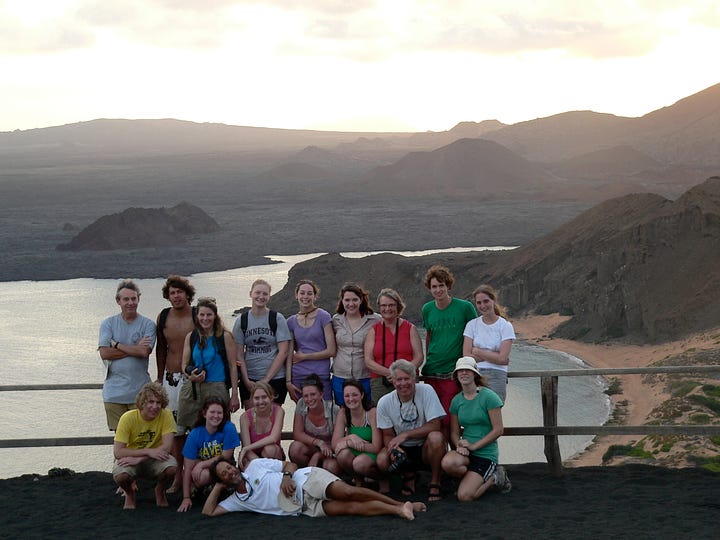
As I entered a new-to-me science center and approached room 1052 – Introductory Geology Lab, it was surreal and bittersweet to see a flier of my recently published children’s picture book posted on the door. Not every student would opt to sign up for a lecture at 5 p.m. during finals week, but a dozen SNC undergrads representing a mix of majors – from the sciences to communications – filtered in one by one to hear from their professor in his classroom for the last time, and from me for the first and likely only time.
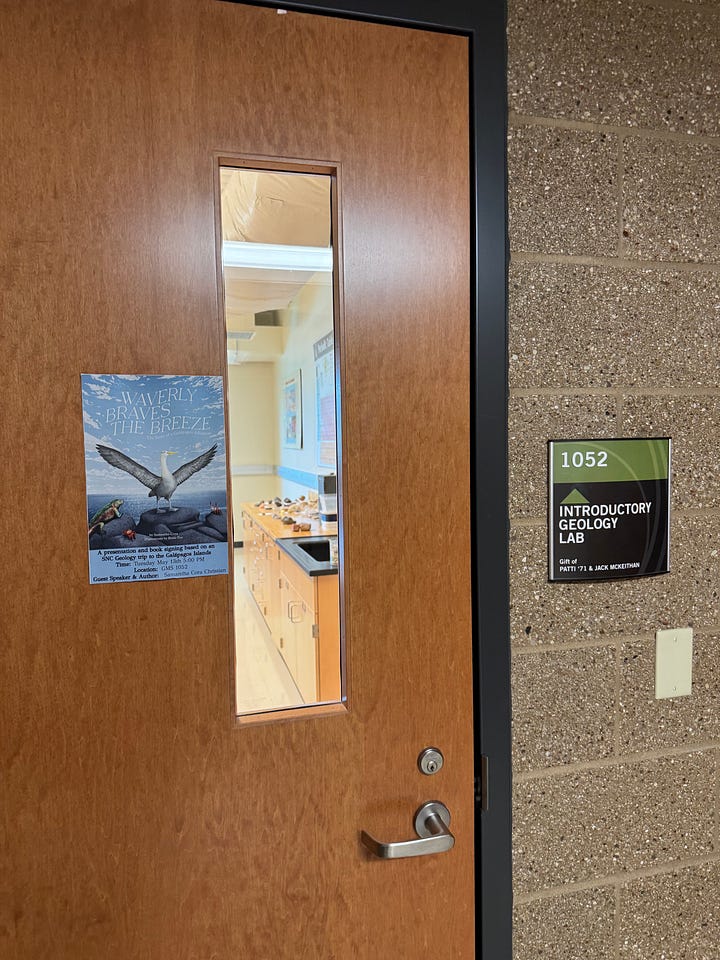
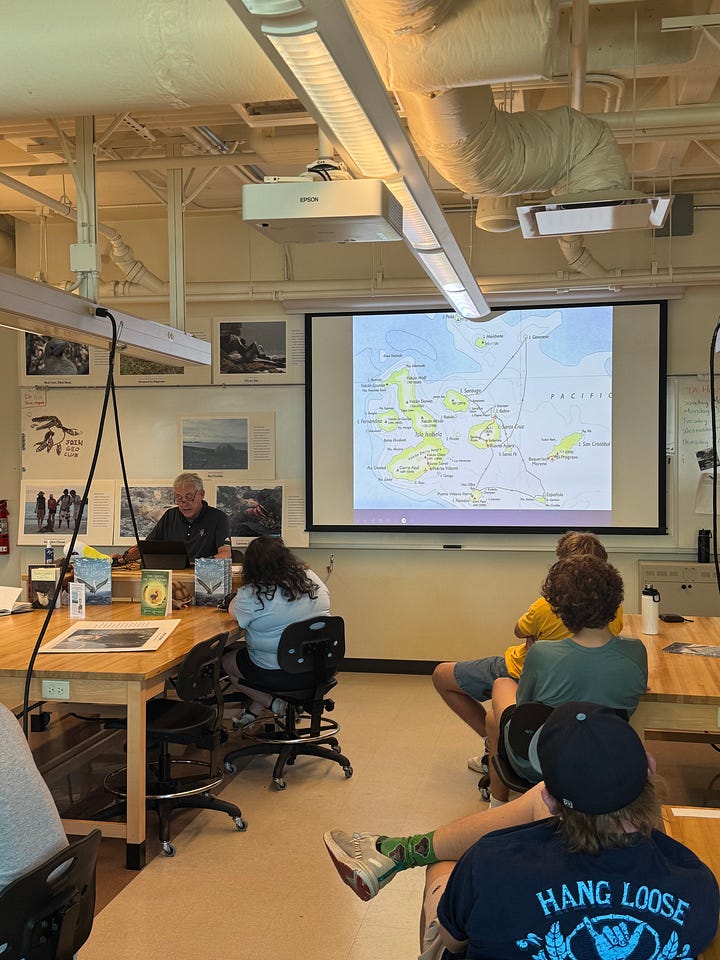
“Waverly Braves the Breeze: The Story of a Galápagos Albatross” (2024, Tra Publishing) is a story decades in the making and inspired by the natural history field course to the islands that I and other students took with Dr. Tim Flood, professor of geology. Our presentation was held on his final day teaching at St. Norbert College, where he was the first geologist hired by the college, the cofounder of the geology program, a recipient of the Donald B. King Distinguished Scholar Award, and the leader of over 24 extended course-credit geology field trips. Including weekend trips, Dr. Flood estimates that he spent almost 700 overnights with class field trips over the last 30 or so years.

To my delight, Dr. Flood had saved the enlarged matted prints I took of the island flora and fauna as the trip photojournalist, and he invited me to join him in an extemporaneous presentation featuring the photos, slides, and videos our class had co-created over 15 years ago. We had previously collaborated to share our experiences on campus and through the St. Norbert Times and SNC Magazine in spring 2009 to celebrate the Year of Darwin, which marked the 200th anniversary of the birth of Charles Darwin as well as the 150th year of the publication of his influential book, “The Origin of Species.”
Although many know that Darwin’s theory of evolution and concept of natural selection was informed by his observations of species such as finches found throughout the Galápagos Islands, Dr. Flood pointed to a photo of a rock formation next to the ocean and reminded me and the others that it’s also “where the whole idea of fractional crystallization was first proposed” by Darwin, who was “a geologist by training and made his name in biology.”
In all of Dr. Flood’s travels throughout South and Central America, Antarctica, Australia, New Zealand, Fiji, and the Philippines, he said “the Galápagos is the most amazing place” he’s ever been with the most “stunning” geology, plants, and animals on land and underwater. I couldn’t agree more. His family even returned to the islands a few years ago with the same naturalist guide who led our trip, Greg Estes. Dr. Flood offered to reconnect me with Estes and his wife Thalia Grant, co-authors of “Darwin in Galápagos: Footsteps to a New World” (2009, Princeton University Press), who my publishing company hired to fact check my story and provide input on the illustrations beautifully done by Rosie Eve.


It was wonderful to revisit the trip through Dr. Flood’s lens (and occasional dry humor) as he pointed out lava rocks, animal facts, and trip moments that I had forgotten, including details about the last waved albatross to migrate from Española Island that inspired my book. “For these rascals to fly, in their first flight they have to jump off a cliff (about 100 meters high). And if they don’t fly, they’re fish food. And so we sat there for an hour going, ‘Go! Go!’” he recalled in a hushed tone.
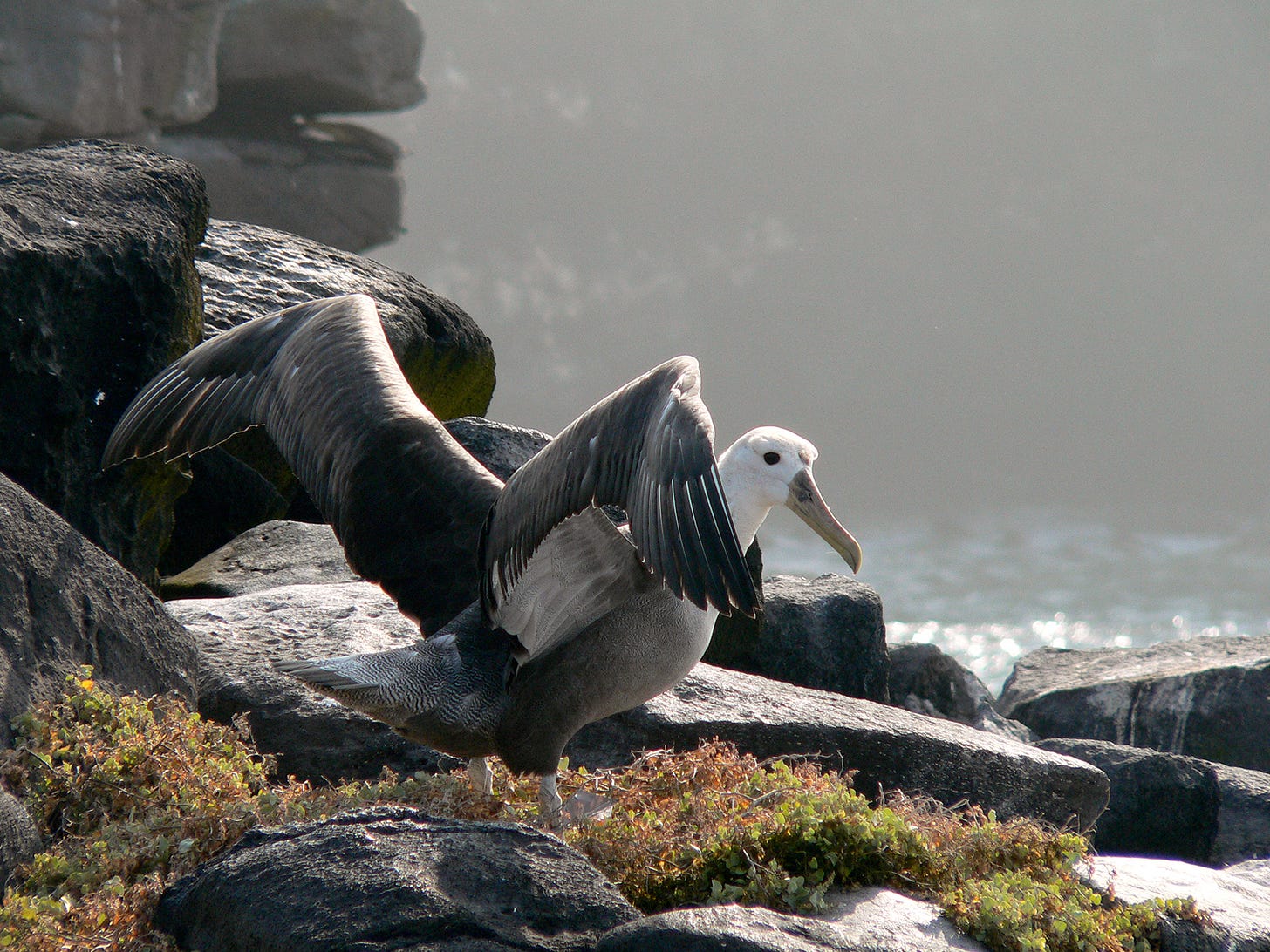
Perhaps that memory was hidden in my subconscious when I wrote the scene in my book with other creatures on the island, including Sal the saddleback tortoise and Daphne the whale shark, encouraging Waverly the albatross to fly by cheering, “¡Puedes hacerlo! You can do it!” (page 24). Humans and anthropomorphized animals all wanted this bird to succeed.

When I shared with the students how my photo of the lone albatross standing with wings outspread at the edge of a cliff represented my own lifelong journey with anxiety, I couldn’t help but think about how those in attendance were also on the precipice of change. Whether they were about to graduate, transfer, travel abroad, retire, start new jobs, or simply adjust to summer back at home, they may have felt like the main character in my book did before taking flight: “Waverly ponders the journey ahead, filled with a mix of excitement and dread” (page 19).
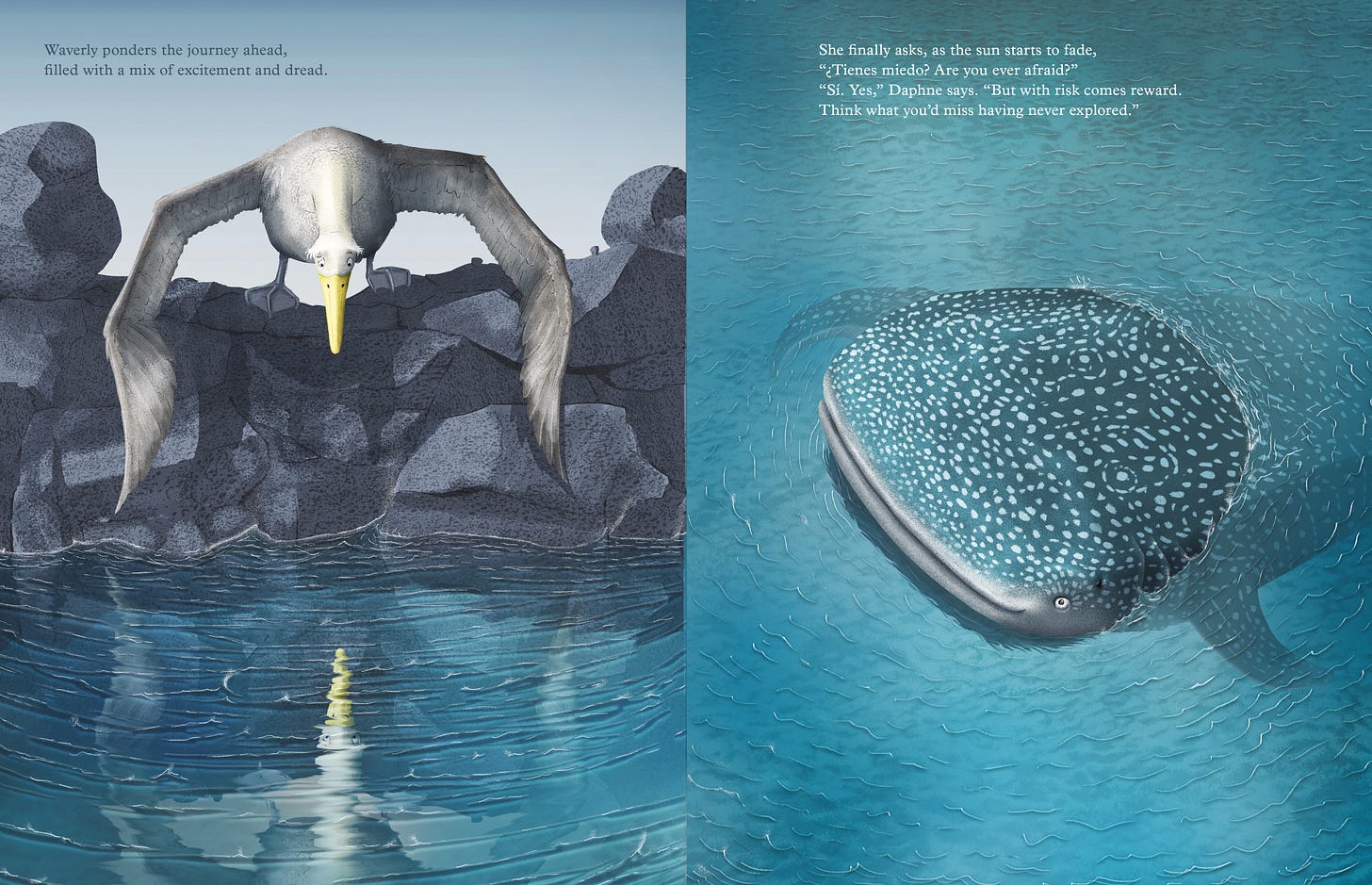
So, how was I, a non-science major, able to attend this field trip meant for biology and geology students? An email blast was sent out on campus to find someone to fill a last-minute spot since one of the students had a scheduling conflict. Because of my interest in marine biology and love for traveling, I jumped on the opportunity to put my name in the ring for consideration, even though I was somewhat hesitant about the price tag (which, compared to rates today, was much more palatable).
I remember that in late 2008, Dr. Flood and I met to discuss the idea of me serving as the trip photojournalist. I had immediately called my mom who told me to stop worrying about how I was going to pay for a once-in-a-lifetime opportunity and just go for it. Her words must have been in my head when I wrote Daphne’s line years later: “...with risk comes reward. Think what you’d miss having never explored” (page 20). So, I agreed to mow lawns for my parents’ landscaping business an extra summer and the geology department invested in an underwater camera for me to use. The rest, as they say, is history.

“Sometimes doors will open in your life. When doors open, if you get the chance, go through there, because that chance might not come up again. Knowledge that you pick up along the way that you might not think is useful turns out to be useful later on. It gives you broader experiences,” Dr. Flood said, motioning to my matted photographs and book. “We always require little research projects from the students, and hers turned into a book, ultimately, which is pretty cool.”
All because Dr. Flood gave me a chance, and I found the courage to say yes. I am forever grateful.
After the talk, I saw myself in the students who lingered just a little longer, soaking up their last classroom interactions with a professor that they clearly respect and admire. I wondered how many moments like these had unfolded in the last few weeks in different spaces across my alma mater as it – like our nation – faces uncertainty and seismic shifts (Green Bay Press Gazette article).
I am so thankful for the experiences I had and the people (and creatures) I met on and off campus through my liberal arts education at St. Norbert College. Being able to blend what I was learning in English, Spanish, science and art classes with my campus newspaper job and my love for nature has sparked a lifetime of learning, creation and joyful connections.
The internet helped me unearth a 2009 research paper that Dr. Flood published with colleague Dr. Nelson Ham, professor of geology and environmental science, titled “International field trips in the undergraduate geology curriculum—philosophy and perspectives.” Similar to the experiences their class had studying in Costa Rica, I’m one of many students who “indicated that the experiential learning approach” enhanced “self-confidence and professional identity.”
While I may not have changed career paths from English and art to geology and biology, I have still found ways to weave those fields together years later in surprising ways. For example, as the editor of a national magazine called “Pathways Across America,” I created the layout for a Partnership for the National Trails System case study about Ice Age Trail land acquisitions like Mammoth’s Back Preserve, a 46-acre property at the edge of the Glaciated and Driftless Regions in south central Wisconsin. Now, I write a blog called “Under the Drumlin Sun,” named after the long hills – formed by glaciers – that I explored growing up on our family farm and woods. The publication is meant to remind us that we are all children of the earth who can live beautifully rooted in the past, focused on the present, and mindful of the future.
These experiences unexpectedly brought me into classrooms around the state to share my story to toddlers all the way up to college-age students. A tale of bravery and friendship is for everyone, wouldn’t you agree? Two years ago I launched my own nature-based organization for young families called Playful Acorns, and this summer I’m trying something new as a parent helper for the 4-K nature explorers class at my toddler’s school. Who knows? Perhaps one day I’ll go back to school to complete my intended degree in teaching. Or maybe another door will open.
Ever since my book was published on World Book Day and during Earth Week on April 23, 2024, my passions for creative writing, photography and environmental education have been reinvigorated. I also know I can face my fears…not just by stepping outside of my comfort zone, but by taking a giant leap into the unknown.
To everyone reading this, I know that you can do it, too. As I sign in all of my books: May your dreams take flight.
Samantha Cora Christian Haas is a former editor-in-chief of the St. Norbert Times, a published children’s book author, creator of the organization Playful Acorns, and freelance writer and photographer in Madison. Do you know of a daycare, school, library, or bookstore that may want to host me for an in-person or virtual event? Or do you want to purchase a signed copy of my book? Please reply to this email or use the contact form at samanthacora.com. Thank you for your support!






